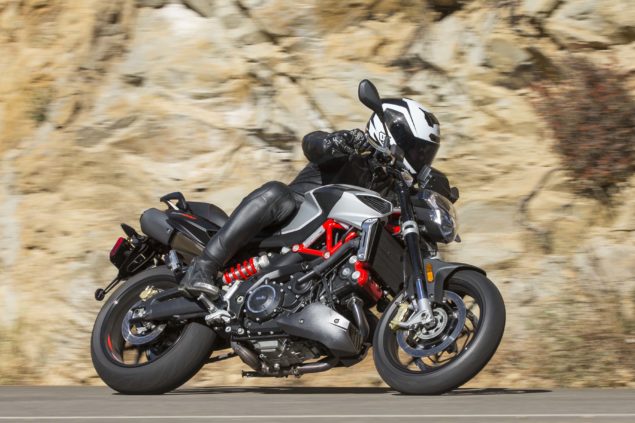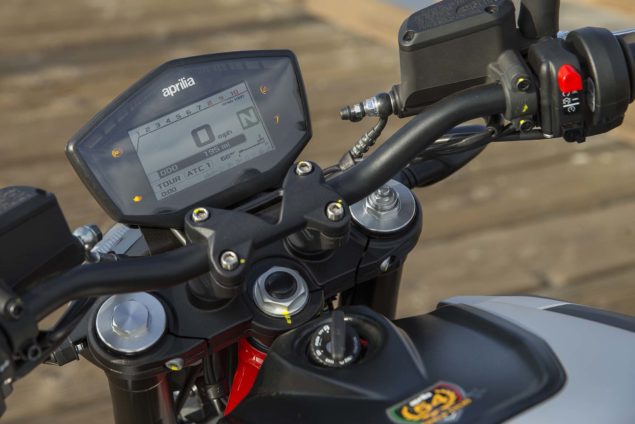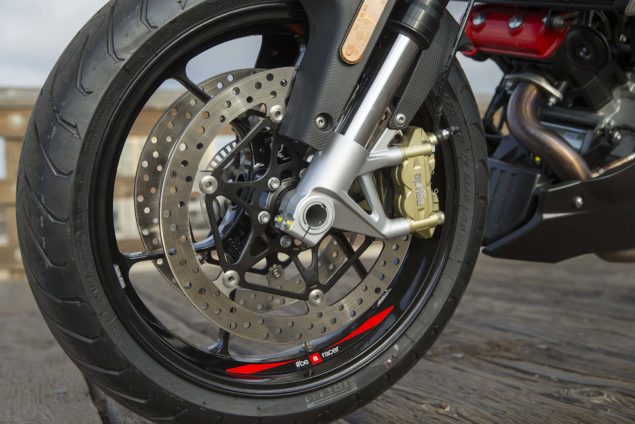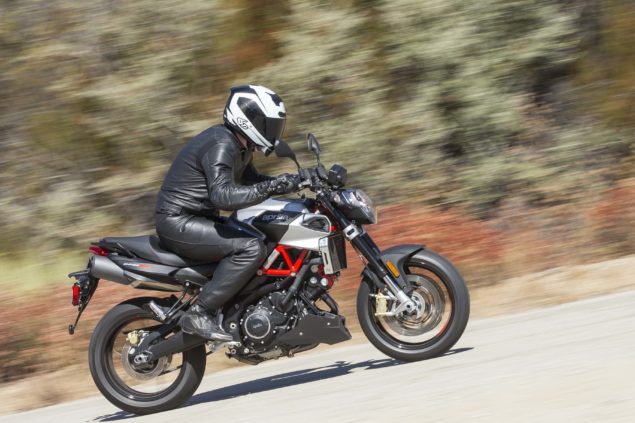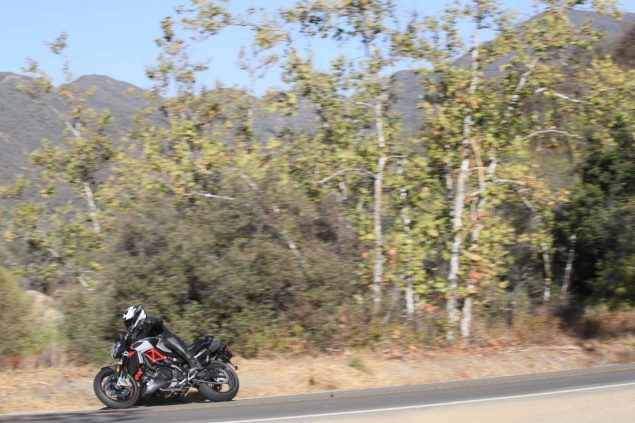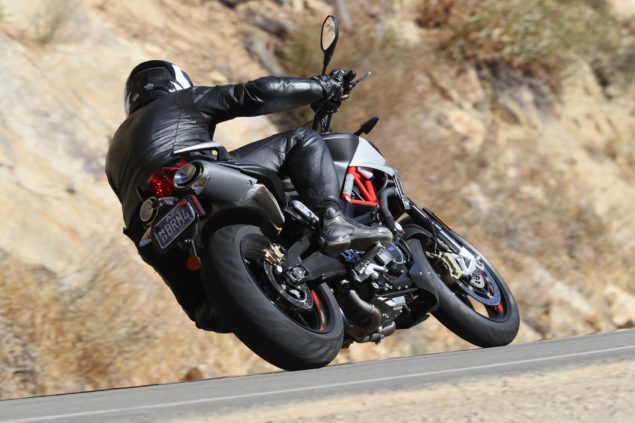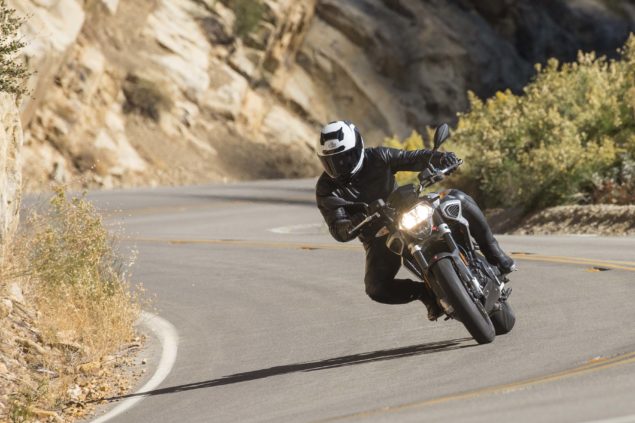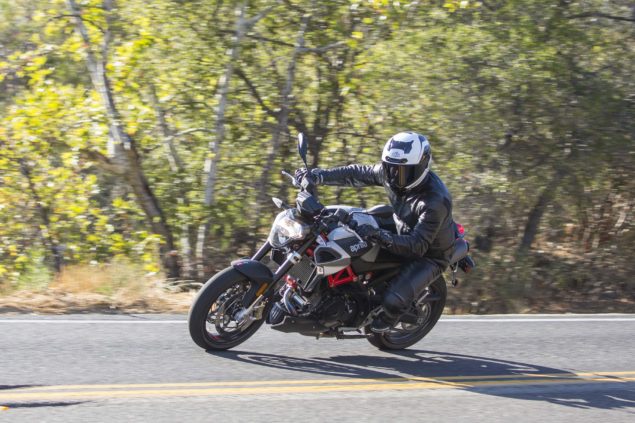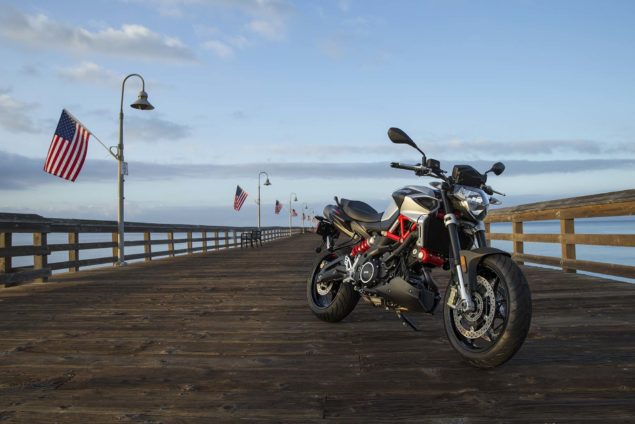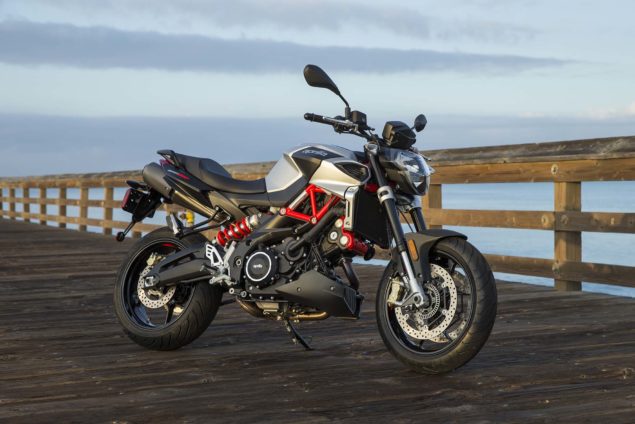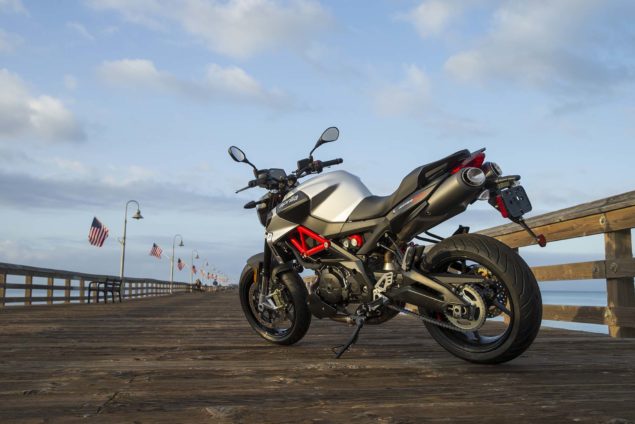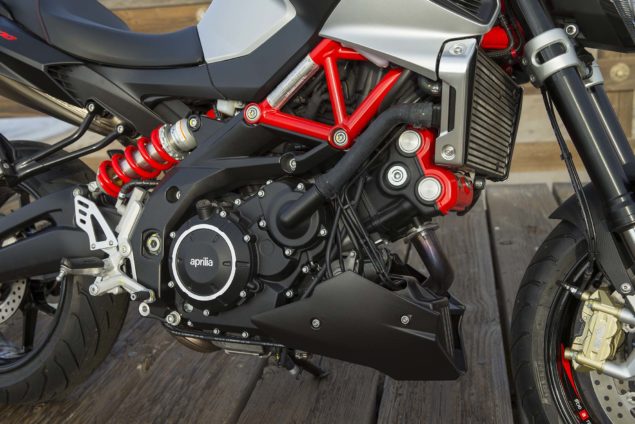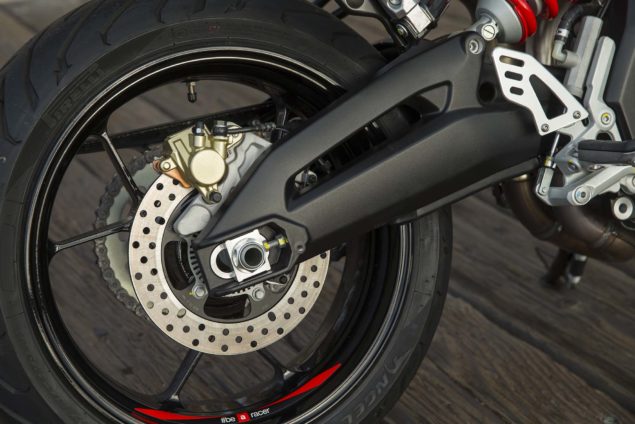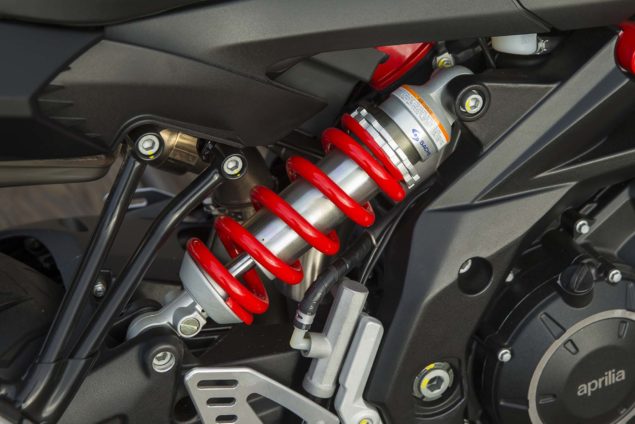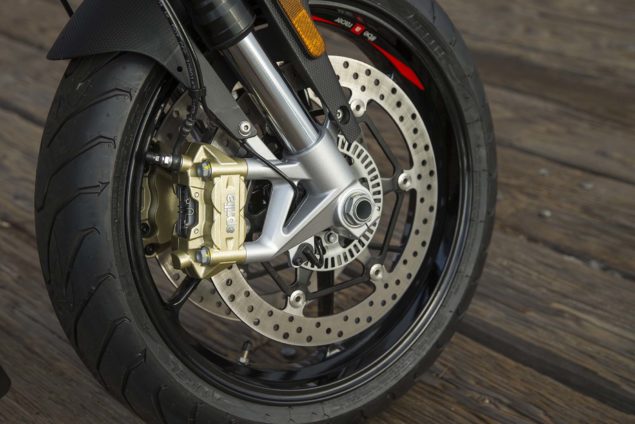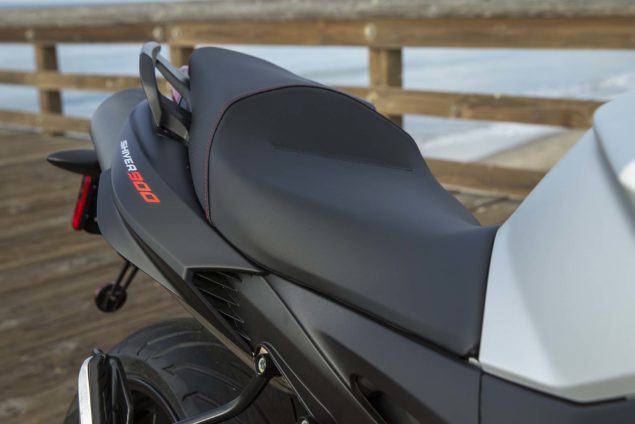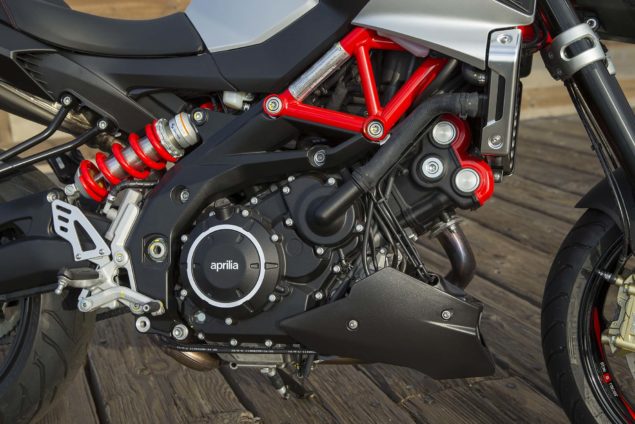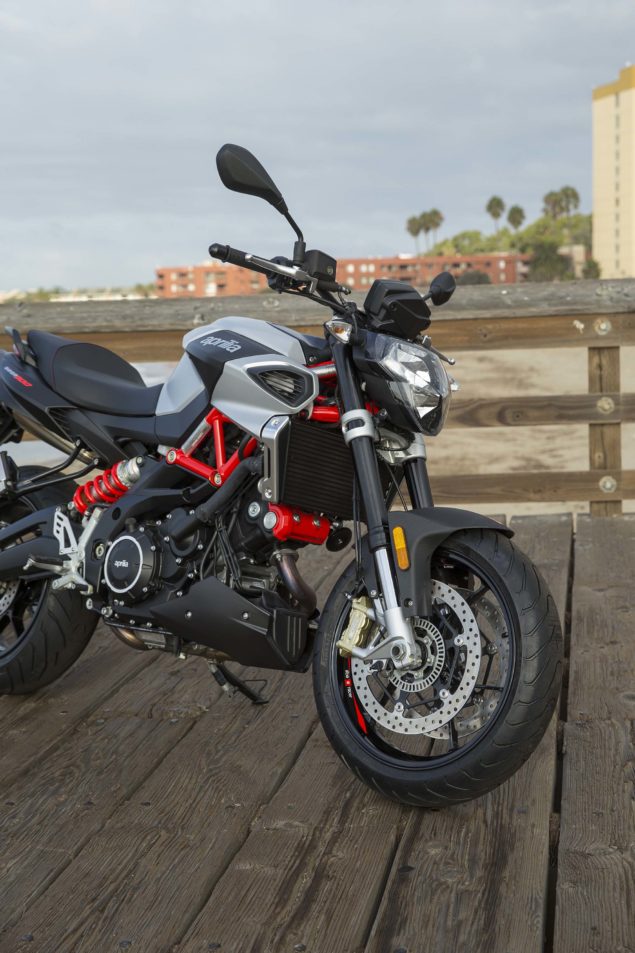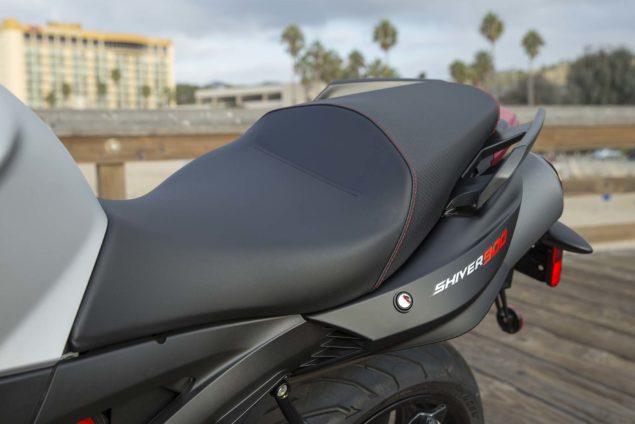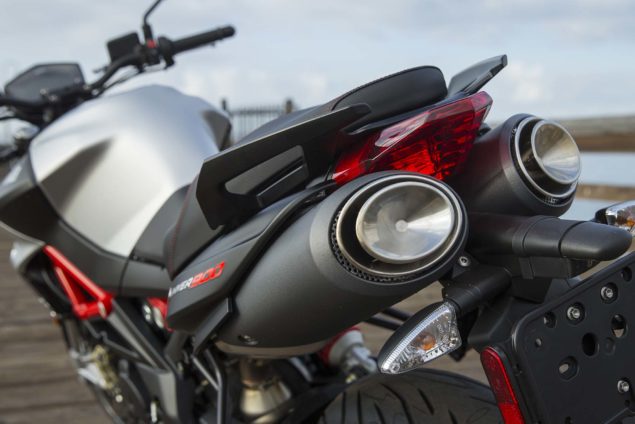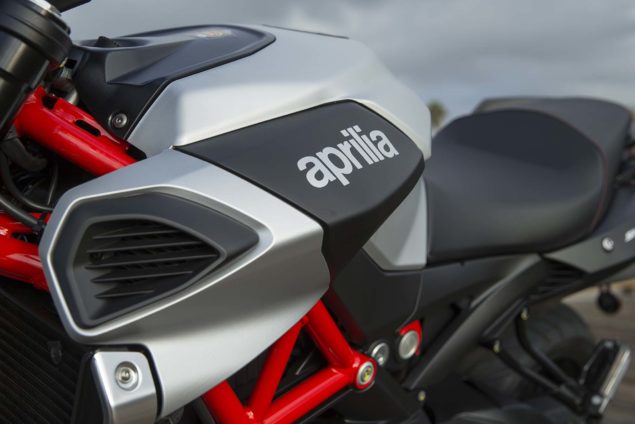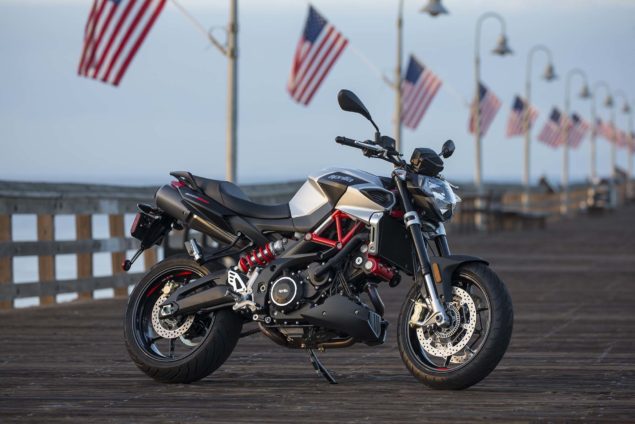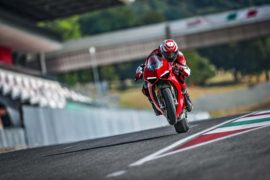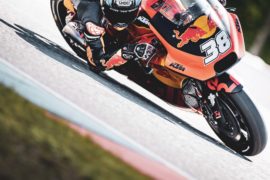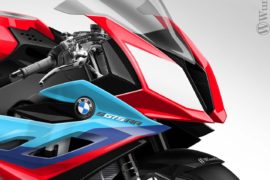For the 2018 model year, Aprilia is updating two long-time members of its lineup, creating in the process the Dorsoduro 900 and Shiver 900 motorcycles.
Today we will focus on what it is like to ride the Shiver 900, though many of our thoughts about this updated roadster are similar to those we published about the Dorsoduro 900 yesterday – you can read those here.
While previous iterations of the Aprilia Shiver 750 were fairly forgettable, the overhaul that has been given to the Aprilia Shiver 900 makes the peppy roadster one worth considering. Dare we say, it surprised us.
The engine is of course revised, and is now Euro4 compliant, but Aprilia has added a more robust electronics suite, as well as new hardware pieces and chassis updates.
As with the Dorsoduro though, the real strength of the 2018 Aprilia Shiver 900 is its pricing, which at $9,399 MSRP is very competitive against the other European middleweights. Good news too, the Shiver 900 is a potent motorcycle to ride.
What’s New?
The marquee change to the Shiver 900 is right there in the name, the new 90° v-twin engine that has been stroked out to an official 896cc in displacement, while the 92mm bore remains the same from the 750 model.
This gives a modest power boost, and substantially more torque over its 750cc predecessor, all while keeping the bike in-line with European emission standards.
Aprilia touts some smart internal engine changes for the 900cc design, namely a new crank with a longer stroke and revised balancing. A new piston coating has also been used for less friction, as well as a reinforced piston pin. The piston design has also been lightened.
The throttle has been changed, as has the lubrication system to the engine internals. The injector system has a new double-jet design, which operates with more pressure and better spray nebulization.
The transmission has also been revised, with a new primary gear ratio (40/69) and better friction properties. This helps contribute to the clutch lever needing 15% less force at the lever to engage.
Other changes include some chassis changes to accommodate the new engine, though the design has been roughly kept the same. Lastly, eagle eyes will note the new tri-spoke wheels, which are significantly lighter than before (~5 lbs).
Engine
The new 896cc v-twin is the big selling point of the Aprilia Shiver 900, as the Euro4 compliant motor brings a much-needed level of refinement to the Shiver name.
The 94hp machine lacks the top-end punch found on rival machines, and the peak torque figure of 66 lbs•ft isn’t going to blow the doors off either, but the big selling point for the new 896cc engine is its rideability, which helps you to forget the lack of raw punch that is found on competing hardware.
This is because the engine is smooth at low rpm, and makes good linear power through the rev range, on its way to just over 9,000 rpm.
The gearing remains the same on the Shiver, while the Dorsoduro 900 drops a tooth off the front sprocket. You won’t notice the gearing change too much, and the wider gearing selections make for a machine that excels at being ridden hard, and fast.
The gearbox is also a joy, with its easy and smooth shifting. During our time on the bike, Aprilia Shiver 900 didn’t once give us a hard time finding neutral when we wanted to, and it didn’t finding it for us when we didn’t, which isn’t something you can say about all European motorcycles.
Electronics
The Shiver 750 was the first model from Aprilia to have a ride-by-wire throttle, and it truthfully wasn’t fully baked when it debuted in 2007 – a sin more forgivable at the time, though cardinal in nature at this point of the motorcycle industry.
This all changes with the 900 platform though, with the Shiver 900 now sharing the same throttle hardware with Aprilia’s V4 platform.
This means a throttle system without cables (wires only to the throttle body), and a Magneti Marelli 7SM injection system, which reduces not only the overall weight of the motorcycle, but also greatly improves its connection to the rider.
As such, the overall effect from the throttle is quite good, and while we found some vagueness in its application on the Dorsoduro 900, on the Shiver 900 we found the throttle to be quite crisp and connected – a strange but noticeable difference.
We are not sure why there is a difference in throttle responsiveness between these two motorcycles, but hopefully Aprilia can map the Shiver’s settings to the Dorsoduro at some point in time.
Moving forward, there are three riding modes available, all of which provide a good separation of use, and live up to their names: Sport, Touring, and Rain.
The traction control settings are also quite diverse in their operation, with each of the three-levels offering a pretty sizable step from the previous one. As such, spirited riding will best had at traction control Level 1, casual riding at Level 2, and Level 3 left for rainy days.
While the Aprilia Shiver 900 features a dual-channel ABS module from Continental, you have only the option of having the ABS on or off.
Overall, the electronics bring the Shiver 900 into the modern state of the art that we are seeing from rival brands in the space, but it should be noted that Aprilia isn’t really exceeding expectations here with its 2018 models.
Chassis, Brakes, & Suspension
If the engine is the high-point to the Aprilia Shiver 900, the chassis pieces is where the bike shines less-bright. The trellis portion of the frame has been modified slightly to accommodate the new engine, and the overall design remains quite robust and heavy at 467 lbs (wet).
The suspension has been changed, with a Sachs rear shock and Kayaba forks doing the work. Both units are fully adjustable, with the forks splitting the compression, rebound, and pre-load duties.
The brakes are the biggest weakness for the Aprilia Shiver 900, which shouldn’t come as a big surprise to followers of the brand.
All is not lost though, while the brakes have weak stopping-power and a vague feel at lower speeds, once the pads warm up with use, thing start getting better. We would surmise that a simple braking pad swap would vastly improve things for Aprilia Shiver 900 owners.
The Shiver 900 handles quite well, which makes it a pleasant motorcycle to rider…especially when that riding is done in a spirited manner. The bike is neutral in its turning, and tracks well through the corners.
The behavior of the Shiver 900, both at slow city speeds and during fast canyon rides, is very predictable, with ample feedback from the chassis, and while the suspension is a bit soft out of the box for spirited riding, having a fully adjustable suspension setup makes it easy to dial in.
Ergonomics
The riding position on the Aprilia Shiver 900 is more compact than is supermoto sibling. This is because the footpegs on the Shiver 900 are higher up on the chassis than the Dorsoduro, though the reach to the handlebars remains mostly the same.
This makes for a sporty lean-forward sitting posture, that culminates in how the Shiver 900 seat cups the rider and keeps them planted against the fuel tank.
The overall effect is a sporty rider triangle, though it remained comfortable during our riding time. One can imagine that longer riding durations on the highway will need to be supplemented with breaks that involve stretching, however.
The buzzing we reported on the Dorsoduro 900 is much worse on the Shiver 900, with vibes coming through both the pegs and the handlebars. Whereas on the Dorsoduro 900 the vibrations were tolerable, especially at cruising speeds, on the Shiver 900 they are quite noticeable.
Riders will want look bar-end weights and rubberized rearsets if they want to overcome these vibrations, and riders with touring miles on their minds may want to look elsewhere. This is one aspect of the Shiver 750 that the Shiver 900 has not improved upon.
On that same vein, Aprilia’s “Menu” button continues to be a poor choice in design, as it can easily be confused for the turn signal switch. It was removed from the Aprilia RSV4 & Tuono V4 for the 2017 model year, and Aprilia would do well to make this change across the whole lineup.
TL;DR
While the Shiver 750 was a disappointment to ride, the new Shiver 900 is a pleasant surprise from Aprilia. The Italian brand was very strategic in its updates to this plucky roadster, but the changes Aprilia made are smart, meaningful, and well-executed.
When I flew to California to ride Dorsoduro 900 and Shiver 900, I was excited to rider the prior, and less enthusiastic about the latter – mostly because of prior experience on the Shiver 750 model. Leaving to return back to Oregon, it was the Shiver that left the biggest impression though.
The styling isn’t my taste, but the motorcycle is fast and fun to ride. The price point is strong as well, and as such, the Aprilia Shiver 900 should be considered by any rider looking for a middleweight sport bike.
It doesn’t have all the features found on the other European models, but it doesn’t come with a five-figure price tag either. For those looking to get away from the cookie-cutter bikes from the Japanese brands, the Shiver 900 is a strong alternative.
It is not too often that a motorcycle manufacturer can surprise us with a motorcycle, but the Aprilia Shiver 900 did just that. Kudos to Aprilia for that.
Photos: © 2017 Kevin Wing & Brian J. Nelson – All Rights Reserved


